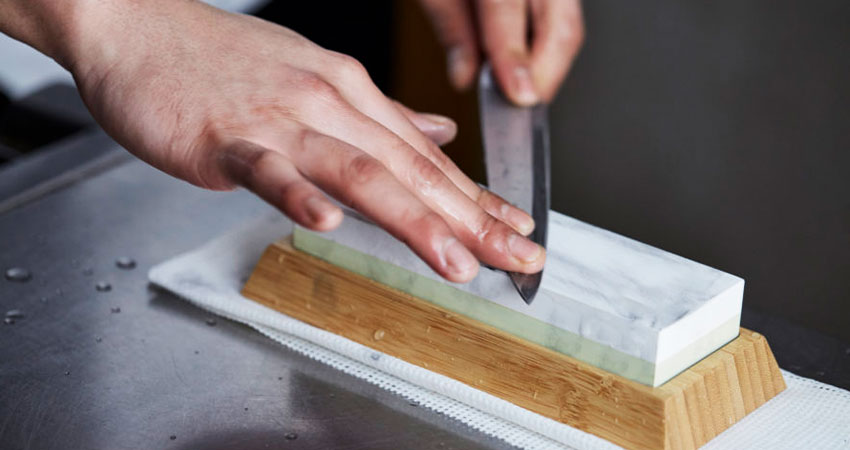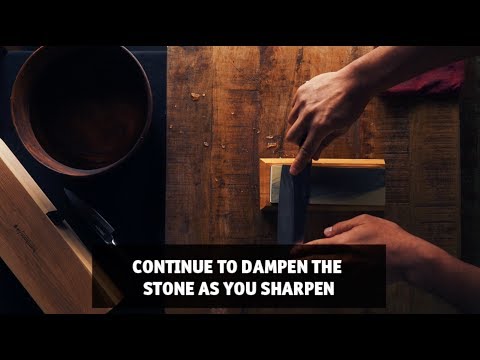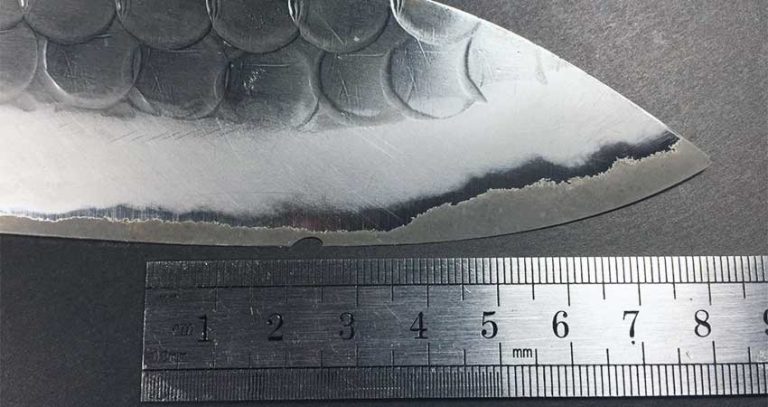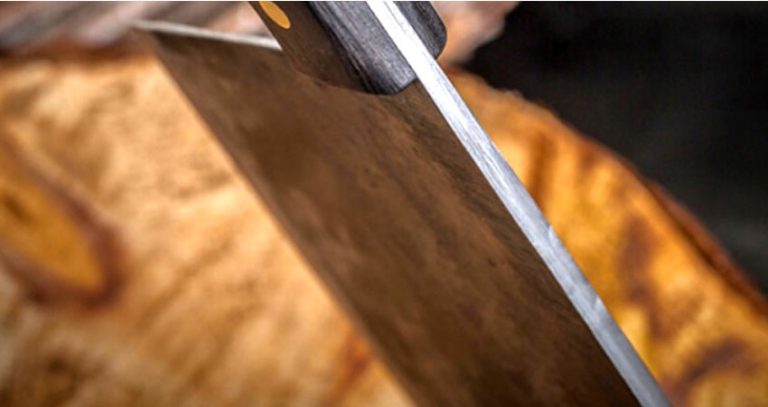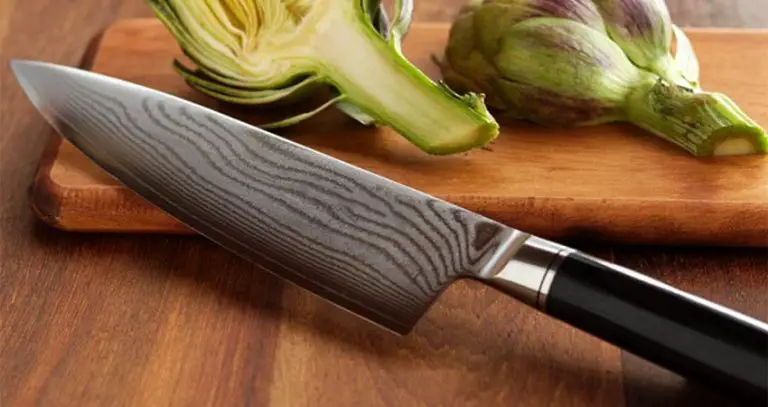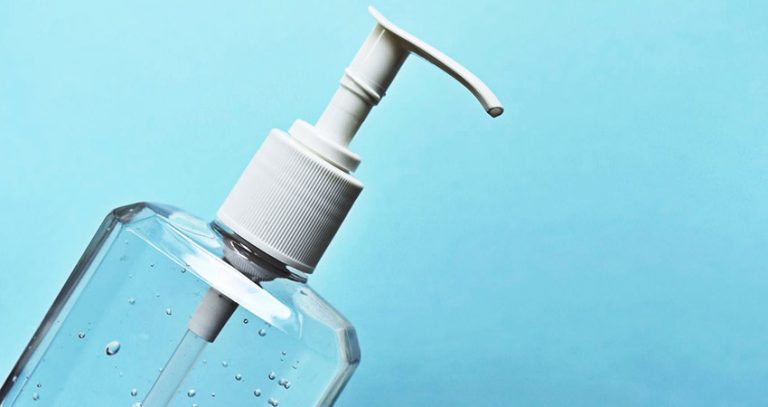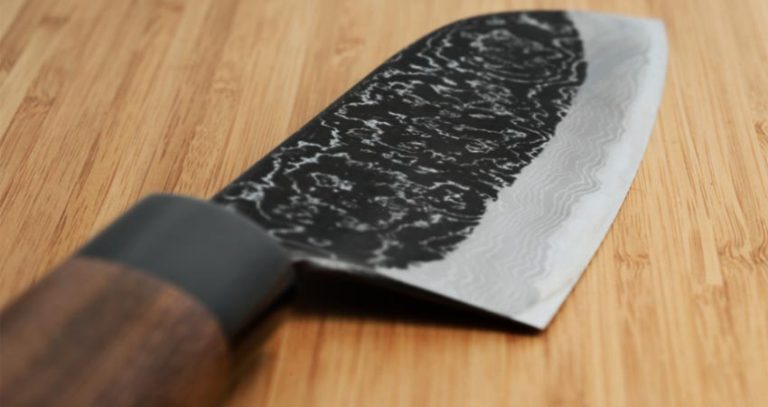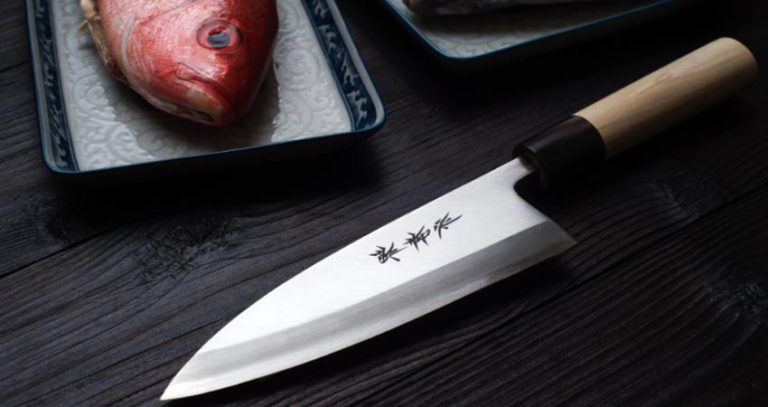How Do You Sharpen A Kamikoto Knife?
Surely Kamikoto knives are hella expensive. They are made of the finest Japanese steel to bring the authentic Japanese blade’s glory to your countertop.
But that exceptional feel doesn’t mean the process of sharpening these is any different than that of an average Japanese knife; or any knife in general.
So, how do you sharpen a Kamikoto knife?
Well, Japanese people do have their own way of sharpening their knives, and you can keep your Kamikoto bevel going for long with those exact same traditional approaches.
While the world prefers to rely on advanced tech, Japan still chooses to sharpen its blades the old way, using stones.
With precise angle and motion, the process is quite easy. You just have to be patient and cautious enough not to injure your fingers.
The Traditional Stones For Sharpening
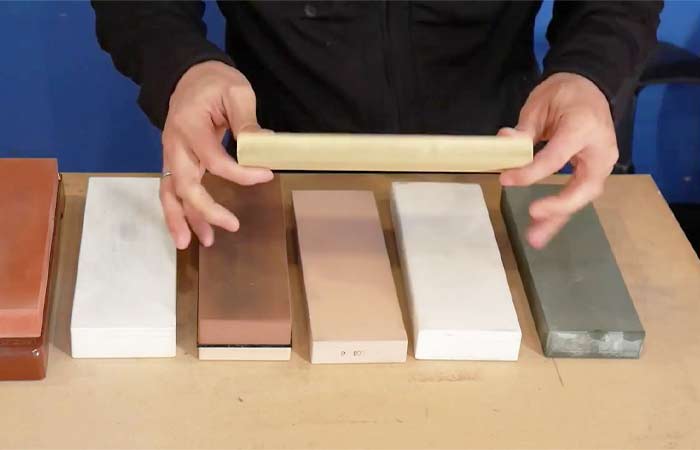
Since the practice has been going on for ages, the stones used for sharpening knives have become a staple part of Japanese culture many moons ago.
And this is how you should approach the whole sharpening process if you want that Kamikoto bevel to be intact.
Kamikoto suggests whetstone for sharpening, which is solely intended for this purpose.
So, you can choose this (as you should); or you can go for natural stone, sharpening with which might be a bit more complicated and time-consuming.
What Is A Whetstone?
It’s a type of stone that’s particularly designed and built for sharpening metal tools through honing.
And it’s more preferred due to the way the stone removes scraps and particles faster than any other manual medium.
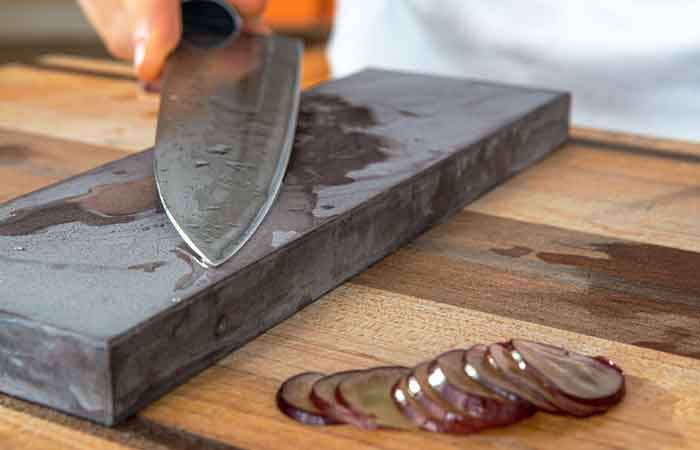
Grit Level
- These stones feature several grit levels based on what you want for your blades. It ranges from 240 grits to 8000.
- 240 to 1000 is for sharpening the edges of a knife that still works quite alright; these stones are known as coarse stones. It’s mostly used for tip honing or smoothening the chipped edges.
- Medium stones are the ones of 1000 to 3000 grit and are meant for the ones with really blunt bevels.
- For ultimate polish and refining, have to use stones with grit level above 3000, and those stones are labeled as finishing stones based on the task they serve for.
- The grit levels are mentioned on the stones for customer convenience, and the different colors help to identify the purpose.
Why Is Whetstone Preferred The Most?
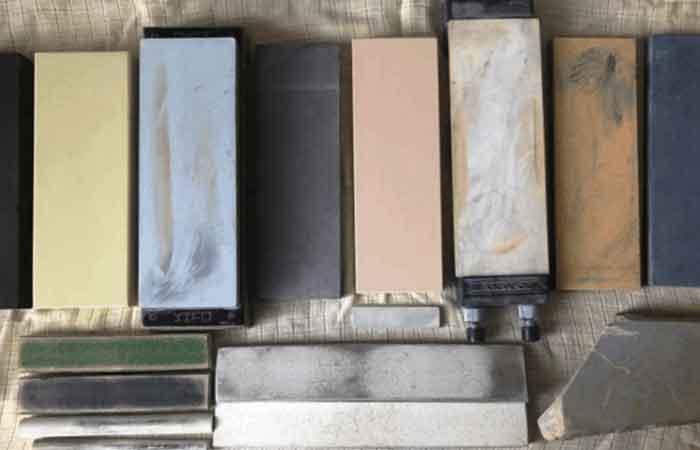
Kamikoto is famous for its blade-craft, the reason why the brand is still admired all around the world despite being so pricey.
And the company itself recommends sharpening their knives using a whetstone to preserve the integrity of an authentic Japanese knife.
Obviously, manufacturers would know what’s best for their product, right?
And pick the Japanese whetstone for the best result, also known as Waterstone. Since we’re talking Kamikoto, we believe you’re already aware that they manufacture whetstones as well.
Then what about natural stone? Although the idea is not immediately unwelcomed, the option is for the times you can’t access a whetstone right away.
How Do You Sharpen A Kamikoto Knife?
Here comes the crucial part. To be frank, sharpening a knife isn’t that hard if done right.
And be careful while at it; you might cut your skin without proper focus or dedication.
Sharpening With A Whetstone
Choose The Right Grit
First, you have to decide how much sharpening your Kamikoto knife might need. Depending on the sharpness required for the blade, choose the right grit.
Course stone for sharpening the tip or smoothening the edges; medium stone to get rid of the blunt bevel; and finishing stone for a pleasant, refined look.
Since we’re talking sharpening, it’s either going to be a course or medium stone based on the dullness of the edges.
3000 grit is for the bluntest knife, so it’s important that you pick something depending on how much sharpening the steel needs. Otherwise, the texture might damage the knife.
Soak The Stone In Water
Before honing, prepare the slab by submerging it into a bowl of water. Let it rest there until the bubbles disappear, or 10 to 15 minutes maximum.
Dampen The Stone
Take the stone out of the bowl, and place it on a non-slip tray or plate so that it doesn’t get misplaced with constant back and forth of the knife later on.
Throughout the sharpening process, dampen the stone repeatedly to keep the surface all wet and moist.

Sharpen The Knife
Here comes the most important part. Place the knife onto the stone at a 15-degree angle with the bevel touching the surface, and start sliding it back and forth.
After sliding the bevel like that several times, start stropping it gently and slower than before in the reverse direction.
Honing one side of the blade will create a burr all over the edges. Change the side and repeat both the processes again until the burr is all cleared out, and the bevel looks sharper and shinier than before.
Also, while at it, change the side of the stone mid-process for the perfect grit level. Start with a lower grit, and as the burr appears, switch to the other one.
Test The Sharpness
When you’re satisfied with the honing, take a piece of paper and try to run the knife through it. If it cuts through smoothly, the edge is sharpened enough.
Otherwise, repeat the sharpening process again until you get your targeted edge.
Rinse The Knife
Once you’re done sliding the steel back and forth and stropping, rinse it properly before use to get rid of all particles and residue.
Although it’s not initially advised by the company; if you can’t find a Waterstone for sharpening, go for a natural stone.
Sharpening With A Natural Stone
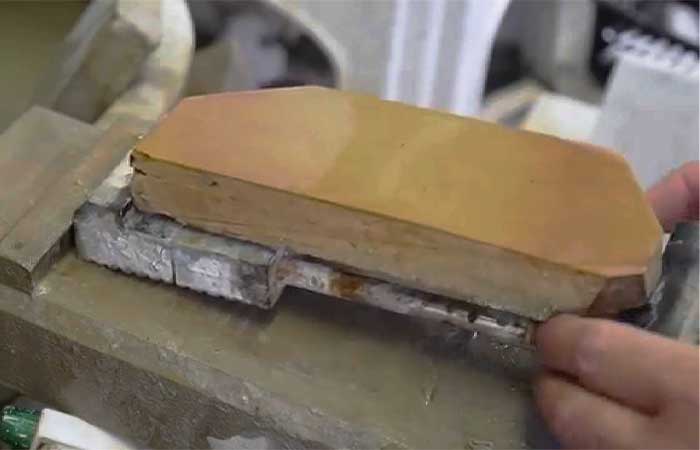
The process is just like the whetstone but a bit more work. You dampen the stone properly, place it somewhere slip-resistant, and then smoothen the surface with an SK 11 diamond plate before proceeding with sharpening.
Grit levels are similar. However, you have to slide and strop several times more than with the whetstone to get the same sharp edge.
Conclusion
After the process described above, are you still hesitating about how do you sharpen a Kamikoto knife?
See? Not as complicated as it feels in words!
Sharpening is like a fun sport with the right grit and the right stone. Concentrate fully, and you’ll get a hold of how to sharpen a Kamikoto bevel in minutes.
There’s no match for Japanese blades. Kamikoto understands that, which is pretty clear from the quality of their knives.
The steel is bound to last long if handled and sharpened properly.

